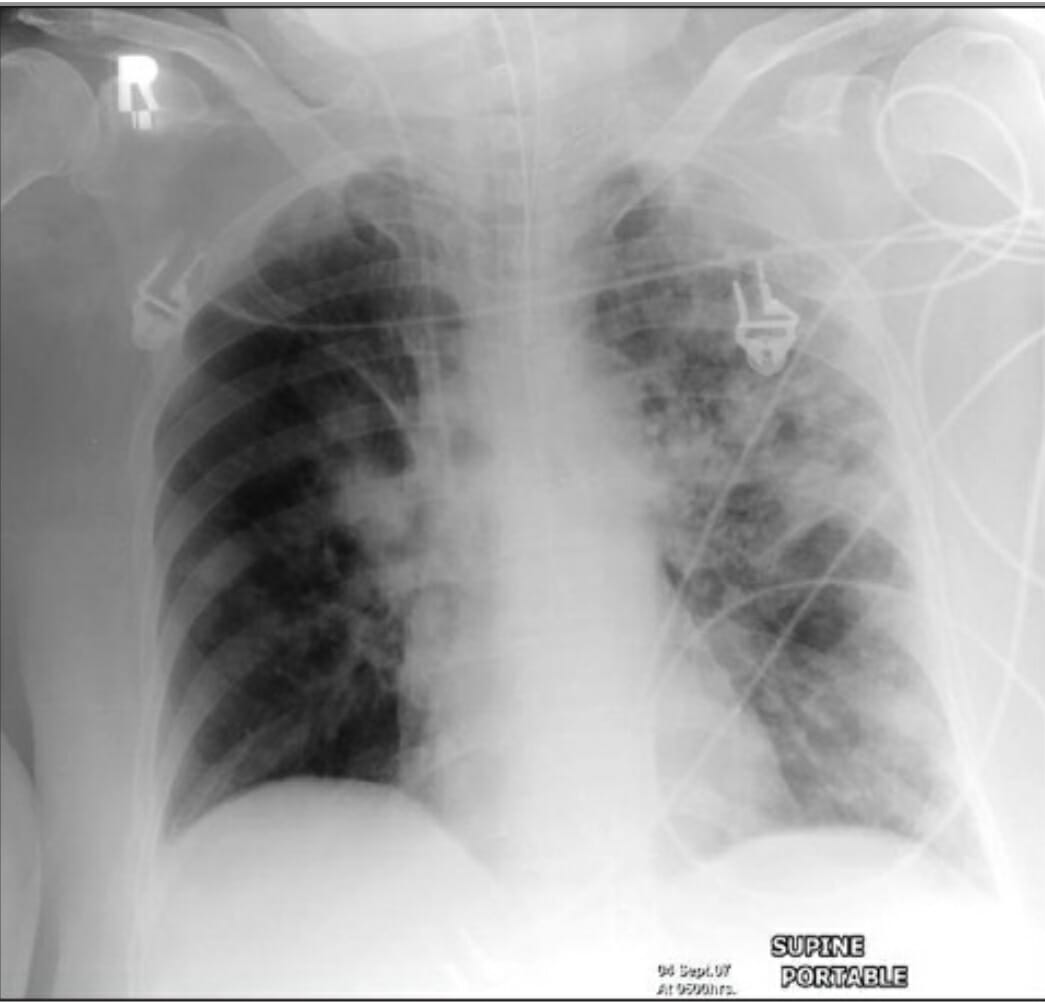Playlist
Show Playlist
Hide Playlist
Subacute Lung Infections
-
Slides 02 InfluenzaATuberculosis RespiratoryAdvanced.pdf
-
Download Lecture Overview
00:01 Right, so now we are going to move on to talk about Tuberculosis. Now, Tuberculosis is one form of what we might call a sub-acute lung infection. Pneumonia is a subject of another lecture and that is a very acute lung infection of the alveoli associated with short history a big inflammatory response, quite extensive shadowing in this lobar distribution as you can see in the x-ray left hand side in general, and a very high C-reactive protein showing quite a marked inflammation. 00:31 When we talk about sub-acute lung infections we are talking about infections which develop over a much longer period of time than the few days that the pneumonia takes, we're talking about a few weeks and in fact even months sometimes. The disease itself tends to be more localized than an acute pneumonia and the consolidation you see will not necessarily be in a lobar distribution, and is often associated with nodules and cavitation. And as well as its longer history the patients tend not to have such a marked inflammatory response or lower C-reactive protein and the hypoxia is not particularly a major problem in these circumstances because not much lung is affected. And the commonest cause of these sub-acute infections is tuberculosis is by far the commonest cause. There are other causes and these are listed in the table, so you see on the right hand side as well as tuberculosis, there are other organisms called non-tuberculosis mycobacteria and these are relatives of the tuberculosis bacterium but they live in the environment and occasionally cause infections, which are similar to tuberculosis. You can also get sub-acute lung infection by gram-negative bacteria, Nocardia, another unusual kind of bacteria that lives in the environment. Actinomycosis which is again another unusual bacteria which normally actually lives in your own area of your mouth, and various fungi can cause similar diseases. And this is a very different range of organisms for those that cause acute pneumonia which are discussed in detail in the other lecture, but mainly include pneumococcus, haemophilus influenza, staphylococcus aureus, and influenza A, as well as the atypical bacteria such as mycoplasma and chlamydophila. So those are quite a different range of organisms to the sub-acute pneumonia organisms.
About the Lecture
The lecture Subacute Lung Infections by Jeremy Brown, PhD, MRCP(UK), MBBS is from the course Infections of the Respiratory Tract.
Included Quiz Questions
Which of the following is the most common cause of chronic lung infection worldwide?
- Tuberculosis
- Actinomycosis
- Mycobacterium avium intracellulare
- Aspergillosis
- Streptococcus pneumoniae
Which of the following is a common cause of acute pneumonia, especially in the pediatric population?
- Mycoplasma pneumoniae
- Nocardia
- Actinomycosis
- Tuberculosis
- Aspergillus
Customer reviews
5,0 of 5 stars
| 5 Stars |
|
1 |
| 4 Stars |
|
0 |
| 3 Stars |
|
0 |
| 2 Stars |
|
0 |
| 1 Star |
|
0 |
very in depth, clearly knows his material, displayed in logical fashion






